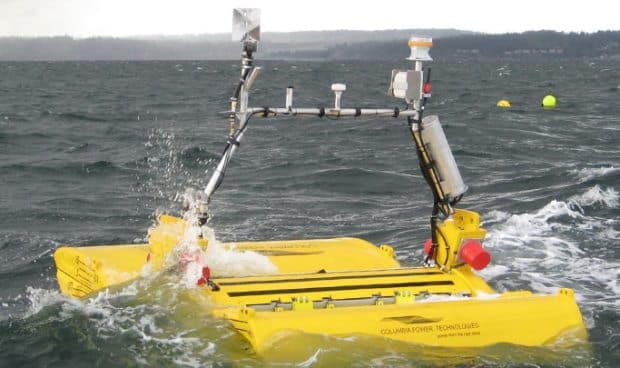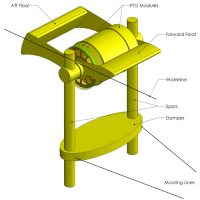In the first ever trial of its kind in the U.S., the huge dynamometers housed at the National Wind Technology Centre (NWTC) in Boulder, Colorado, will be used to help bring a breakthrough wave energy system to fruition.
Usually set aside for testing the latest in onshore and offshore wind turbine technology, engineers from the National Renewable Energy Laboratory (NREL), which operates the NWTC facility on behalf of the U.S. government, will work with Columbia Power Technologies to develop its StingRAY system.
“Though designed to benefit the wind industry, the NWTC’s large dynamometer facility is being leveraged to help advance new ocean energy technology,” said NWTC Director Daniel Laird.
“While still in the early stages of development, ocean energy is progressing rapidly. Over the coming decades, ocean energy could become a major source of electricity powering high-population-density areas near the coasts.”

Columbia Power’s StingRAY wave power system harnesses ocean energy by using two forward and aft floats coupled to low-torque, high-speed generators located in the nacelle of the StingRAY. As each float rotates in response to passing waves and ocean swell, electricity is produced and sent via offshore substations to the mainland grid.
The system can be arrayed in series to build offshore wave farms, much like wind turbines. Columbia Power states the StingRAY is designed for deployment in waters at least 3-4km from shore in depth over 60 metres, away from sensitive coastal habitats.
With each generator the height of a two-storey building, the StingRAY is the largest device ever tested at the NWTC’s dynamometer facility, which is capable of mimicking the back-and-forth movement of the sea to ensure the system can handle actual ocean conditions, including rogue wave strikes.
“We have one of the only facilities in the country with a dynamometer that can apply rotational torque at the speeds and forces required while also applying non-torque loads-which are side forces that simulate the action of a rogue wave hitting a wave energy converter in the ocean,” said Mark McDade, NWTC project manager.
“This matters because the structures of these energy conversion devices must be designed to handle the side forces without damage. The work is pioneering in the field of ocean energy conversion.”









































